-
 Bitcoin
Bitcoin $83,361.2562
-1.66% -
 Ethereum
Ethereum $1,586.1260
-2.74% -
 Tether USDt
Tether USDt $0.9999
0.02% -
 XRP
XRP $2.0836
-2.39% -
 BNB
BNB $578.5275
-1.11% -
 Solana
Solana $126.5625
-2.18% -
 USDC
USDC $0.9999
0.03% -
 TRON
TRON $0.2498
-0.65% -
 Dogecoin
Dogecoin $0.1534
-3.60% -
 Cardano
Cardano $0.6098
-4.22% -
 UNUS SED LEO
UNUS SED LEO $9.3150
-1.20% -
 Chainlink
Chainlink $12.2926
-3.17% -
 Avalanche
Avalanche $18.8257
-6.65% -
 Stellar
Stellar $0.2360
-2.18% -
 Toncoin
Toncoin $2.8628
-1.98% -
 Shiba Inu
Shiba Inu $0.0...01164
-2.82% -
 Sui
Sui $2.0845
-5.01% -
 Hedera
Hedera $0.1567
-5.10% -
 Bitcoin Cash
Bitcoin Cash $320.5351
-1.13% -
 Litecoin
Litecoin $75.1693
-3.11% -
 Polkadot
Polkadot $3.5221
-4.63% -
 Dai
Dai $1.0000
0.01% -
 Bitget Token
Bitget Token $4.2345
-1.90% -
 Hyperliquid
Hyperliquid $15.0548
-5.14% -
 Ethena USDe
Ethena USDe $0.9992
0.01% -
 Pi
Pi $0.6132
-17.60% -
 Monero
Monero $216.2032
0.99% -
 Uniswap
Uniswap $5.1834
-3.42% -
 OKB
OKB $52.6947
2.51% -
 Pepe
Pepe $0.0...07023
-4.90%
How is the annualized rate of return (APY) calculated in DeFi mining?
APY in DeFi mining is calculated using base interest rate, compounding frequency, and additional rewards, varying across platforms due to different algorithms and market conditions.
Apr 06, 2025 at 05:21 am
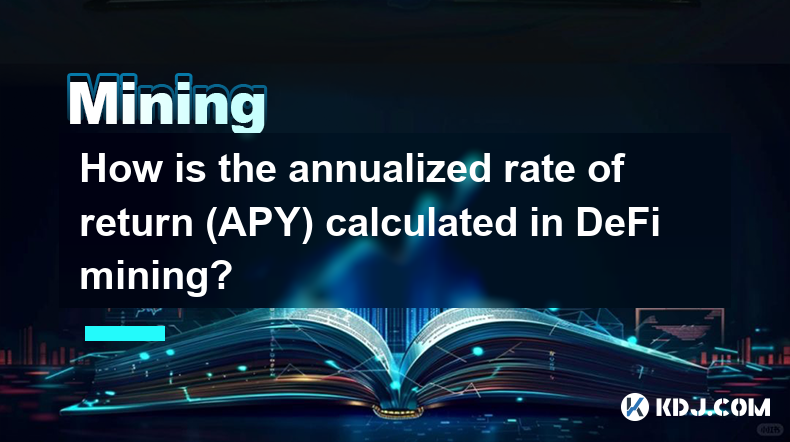
In the world of Decentralized Finance (DeFi), one of the most critical metrics for investors and users is the Annualized Percentage Yield (APY). APY is a crucial factor when deciding where to stake or lend your cryptocurrency assets. This article will delve into the intricacies of how APY is calculated in DeFi mining, exploring the various elements that influence it, and how different platforms may compute it differently.
APY in DeFi is essentially an estimate of the yearly interest rate earned on a deposit or investment. Unlike traditional finance, where APY is often straightforward, DeFi's APY can be more complex due to the dynamic nature of the platforms and the underlying blockchain technology. The calculation of APY in DeFi mining involves several key components, including the base interest rate, compounding frequency, and additional rewards or incentives.
Understanding the Base Interest Rate
The base interest rate is the fundamental component of APY in DeFi mining. This rate is determined by the supply and demand dynamics within the DeFi platform. When more users want to borrow a particular cryptocurrency, the interest rate for lending that asset increases. Conversely, if there is less demand for borrowing, the interest rate decreases.
- Supply and Demand: The base interest rate is influenced by how many users are lending versus how many are borrowing. A high demand for borrowing will push the interest rate up.
- Platform-Specific Rules: Different DeFi platforms may have unique mechanisms for setting the base rate. For example, some platforms use algorithms to adjust rates dynamically based on utilization rates.
The Role of Compounding Frequency
Compounding frequency is another critical factor in calculating APY in DeFi mining. Compounding refers to the process where the interest earned on an investment is reinvested to generate additional earnings over time. In DeFi, the frequency of compounding can vary significantly from one platform to another.
- Daily Compounding: Some DeFi platforms compound interest daily, which can lead to higher APYs compared to less frequent compounding.
- Hourly or Even More Frequent Compounding: Certain platforms may compound interest hourly or even more frequently, further increasing the potential APY.
- Impact on APY: The more frequent the compounding, the higher the APY will be, as the interest earned is continually reinvested to generate more interest.
Additional Rewards and Incentives
Many DeFi platforms offer additional rewards and incentives to attract users to their ecosystem. These can significantly boost the APY for users participating in mining or staking activities.
- Governance Tokens: Some platforms distribute governance tokens as rewards, which can be used to vote on platform decisions or sold for additional profit.
- Liquidity Mining: Users providing liquidity to decentralized exchanges (DEXs) may receive additional tokens as incentives, which can be factored into the overall APY.
- Staking Rewards: Staking certain cryptocurrencies can yield additional rewards, which are added to the base interest rate to calculate the total APY.
Calculating APY in DeFi Mining
To calculate the APY in DeFi mining, you need to consider the base interest rate, the compounding frequency, and any additional rewards or incentives. The formula for APY can be expressed as follows:
[ \text{APY} = \left(1 + \frac{\text{Interest Rate}}{\text{Compounding Frequency}}\right)^{\text{Compounding Frequency}} - 1 ]
Here's a step-by-step breakdown of how to calculate APY in DeFi mining:
- Determine the Base Interest Rate: This is the rate at which your assets will earn interest without considering compounding or additional rewards.
- Identify the Compounding Frequency: Determine how often the interest is compounded, whether it's daily, hourly, or another interval.
- Calculate the Compounded Interest: Use the formula above to calculate the compounded interest based on the base rate and compounding frequency.
- Add Additional Rewards: If the platform offers additional rewards, such as governance tokens or liquidity mining incentives, add these to the compounded interest to get the total APY.
Example Calculation
Let's consider an example to illustrate how APY is calculated in DeFi mining. Suppose you are lending a cryptocurrency on a DeFi platform with a base interest rate of 5% per annum, and the interest is compounded daily. Additionally, the platform offers a 2% annual reward in governance tokens.
- Base Interest Rate: 5%
- Compounding Frequency: Daily (365 times a year)
- Additional Rewards: 2%
Using the APY formula:
[ \text{APY} = \left(1 + \frac{0.05}{365}\right)^{365} - 1 ]
This calculates to approximately 5.13%. Adding the additional 2% reward:
[ \text{Total APY} = 5.13\% + 2\% = 7.13\% ]
Variations in APY Calculation Across Platforms
Different DeFi platforms may calculate APY differently, which can lead to variations in the reported rates. It's essential to understand these differences to make informed investment decisions.
- Platform-Specific Algorithms: Some platforms use proprietary algorithms to adjust interest rates based on various factors, such as the total value locked (TVL) or the utilization rate of the platform.
- Incentive Structures: The way platforms structure their incentives, such as offering higher rewards for certain activities, can also impact the reported APY.
- Risk Factors: Higher APYs may come with higher risks, such as impermanent loss in liquidity pools or the potential for smart contract vulnerabilities.
The Impact of Market Conditions
Market conditions play a significant role in the APY offered by DeFi platforms. Fluctuations in cryptocurrency prices, changes in demand for borrowing, and overall market sentiment can all influence the APY.
- Cryptocurrency Price Volatility: If the price of the cryptocurrency you are lending or staking increases, the value of your returns will also increase, potentially boosting the effective APY.
- Demand for Borrowing: Higher demand for borrowing can lead to higher interest rates, which in turn can increase the APY for lenders.
- Market Sentiment: Positive market sentiment can attract more users to DeFi platforms, increasing the total value locked and potentially affecting the APY.
Risks and Considerations
While high APYs in DeFi mining can be attractive, it's crucial to consider the associated risks. Understanding these risks can help you make more informed decisions about where to invest your assets.
- Smart Contract Risk: DeFi platforms rely on smart contracts, which can have vulnerabilities that could lead to loss of funds.
- Impermanent Loss: Providing liquidity to DEXs can result in impermanent loss, which can offset the benefits of high APYs.
- Regulatory Risk: The regulatory environment for DeFi is still evolving, and changes in regulations could impact the viability of certain platforms.
Strategies for Maximizing APY
To maximize your APY in DeFi mining, consider the following strategies:
- Diversify Across Platforms: Spreading your investments across multiple DeFi platforms can help you take advantage of the highest APYs available while mitigating risk.
- Stay Informed: Keep up-to-date with the latest developments in the DeFi space, as new platforms and opportunities can emerge quickly.
- Monitor and Adjust: Regularly review your investments and adjust them based on changes in APYs and market conditions.
Common Questions Related to APY in DeFi Mining
Q: What is the difference between APR and APY in DeFi?
A: APR (Annual Percentage Rate) represents the simple interest rate over a year without considering compounding. APY (Annual Percentage Yield) takes into account the effect of compounding, which can result in a higher effective return. In DeFi, APY is more commonly used because it reflects the true earning potential of an investment.
Q: How can I verify the APY offered by a DeFi platform?
A: To verify the APY offered by a DeFi platform, you can use the platform's provided calculators or third-party tools that analyze the platform's data. Additionally, understanding the platform's methodology for calculating APY and reviewing historical data can help you assess the accuracy of the reported rates.
Q: Are high APYs in DeFi sustainable?
A: High APYs in DeFi can be influenced by various factors, including market conditions and platform incentives. While they can be attractive, they may not always be sustainable in the long term. It's essential to consider the underlying factors driving the APY and the associated risks before investing.
Q: What are the main risks associated with chasing high APYs in DeFi?
A: The main risks include smart contract vulnerabilities, impermanent loss, regulatory changes, and the potential for unsustainable high yields. It's crucial to balance the potential rewards with these risks and conduct thorough research before investing.
Q: How does the compounding frequency affect APY in DeFi?
A: The compounding frequency significantly impacts APY in DeFi. More frequent compounding, such as daily or hourly, can lead to higher APYs because the interest earned is reinvested more often, generating additional earnings over time.
Q: Can I lose money while trying to earn high APYs in DeFi?
A: Yes, it is possible to lose money while trying to earn high APYs in DeFi. Risks such as smart contract failures, impermanent loss, and market volatility can lead to losses. Always assess the risks and consider your risk tolerance before investing.
Q: How do additional rewards and incentives affect the overall APY in DeFi?
A: Additional rewards and incentives, such as governance tokens or liquidity mining rewards, can significantly boost the overall APY in DeFi. These rewards are added to the base interest rate and compounded interest to calculate the total APY, making the investment more attractive.
Q: What should I consider when comparing APYs across different DeFi platforms?
A: When comparing APYs across different DeFi platforms, consider the base interest rate, compounding frequency, additional rewards, platform-specific algorithms, and the associated risks. Understanding these factors will help you make a more informed decision about where to invest your assets.
Disclaimer:info@kdj.com
The information provided is not trading advice. kdj.com does not assume any responsibility for any investments made based on the information provided in this article. Cryptocurrencies are highly volatile and it is highly recommended that you invest with caution after thorough research!
If you believe that the content used on this website infringes your copyright, please contact us immediately (info@kdj.com) and we will delete it promptly.
- Movement Labs and the Movement Network Foundation have launched an independent investigation into recent market-making irregularities related to the MOVE token.
- 2025-04-16 09:15:12
- Shiba Inu (SHIB) burn rate saw an over 2000% hike, leading to the removal of 20.83 million tokens from circulation.
- 2025-04-16 09:15:12
- Securitize Acquires MG Stover's Fund Administration Business to Become the Largest Digital Asset Fund Administrator
- 2025-04-16 09:10:12
- Trump administration plans to present Congress with cuts to most funding for public media
- 2025-04-16 09:10:12
- XRP (XRP) Displays Promising Growth Potential as It Currently Trades Above $2.00 and the 21-week EMA
- 2025-04-16 09:05:13
- BYDFi Lists $KERNEL, the Governance Token of KernelDAO, with Spot Trading Now Live
- 2025-04-16 09:05:13
Related knowledge
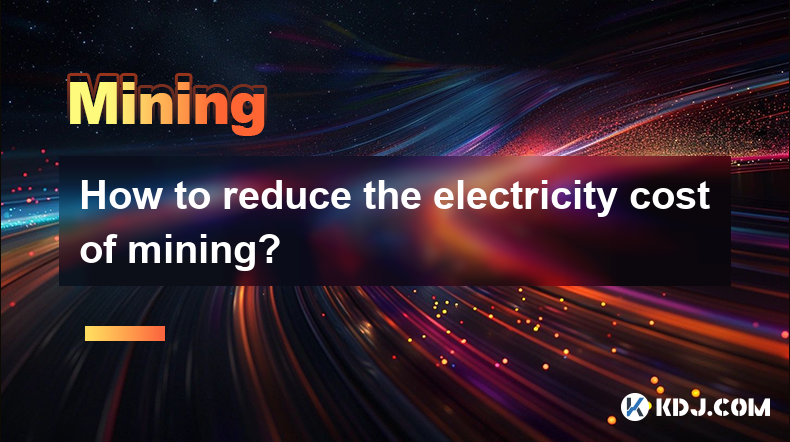
How to reduce the electricity cost of mining?
Apr 16,2025 at 08:42am
Mining cryptocurrencies, particularly Bitcoin, is an energy-intensive process that can lead to significant electricity costs. However, there are several strategies that miners can employ to reduce these expenses and make their operations more cost-effective. In this article, we will explore various methods to minimize the electricity cost of mining. Cho...
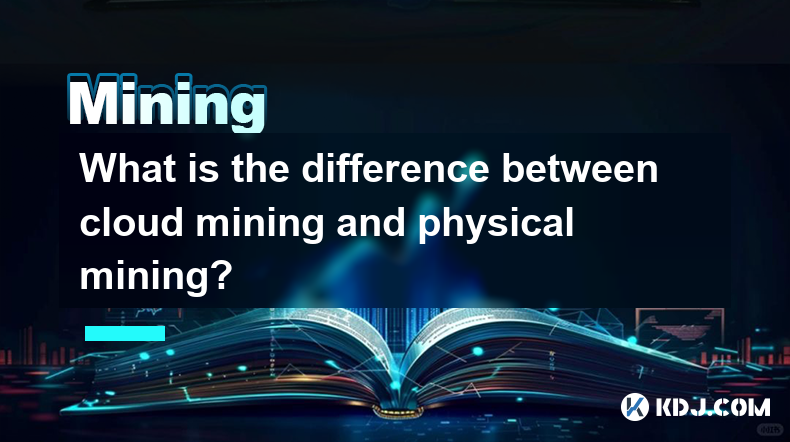
What is the difference between cloud mining and physical mining?
Apr 16,2025 at 01:49am
What is the difference between cloud mining and physical mining? In the world of cryptocurrencies, mining is the process by which new coins are generated and transactions are verified and added to the blockchain. There are two primary methods of mining: cloud mining and physical mining. Understanding the differences between these two approaches can help...
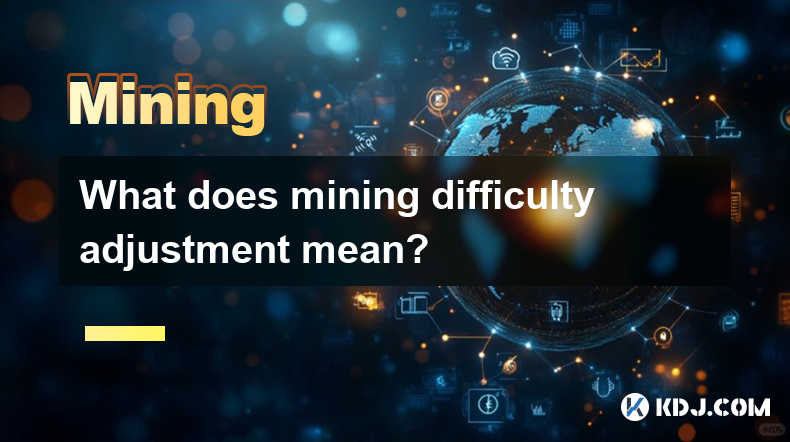
What does mining difficulty adjustment mean?
Apr 16,2025 at 12:42am
What does mining difficulty adjustment mean? Mining difficulty adjustment is a crucial mechanism in blockchain networks, particularly in Proof of Work (PoW) systems like Bitcoin. It ensures that the rate at which new blocks are added to the blockchain remains consistent, despite fluctuations in the total computational power (hash rate) of the network. T...
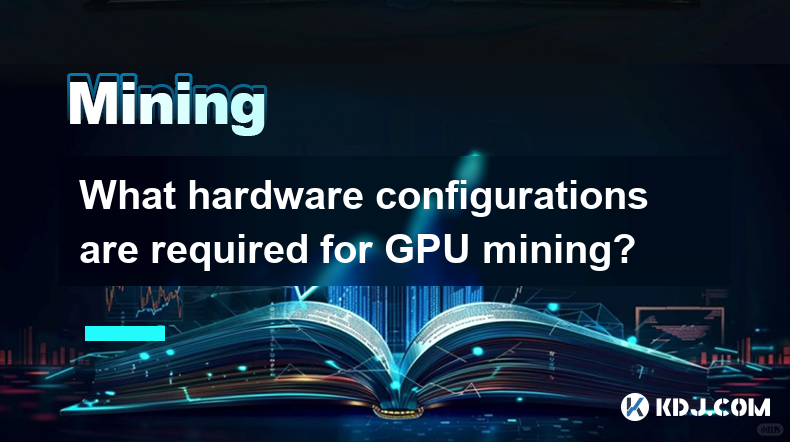
What hardware configurations are required for GPU mining?
Apr 16,2025 at 09:21am
GPU mining has become a popular method for cryptocurrency enthusiasts to mine various cryptocurrencies, such as Ethereum, Ravencoin, and others. To successfully engage in GPU mining, it is essential to understand the hardware configurations required to maximize efficiency and profitability. This article will delve into the specifics of what you need to ...
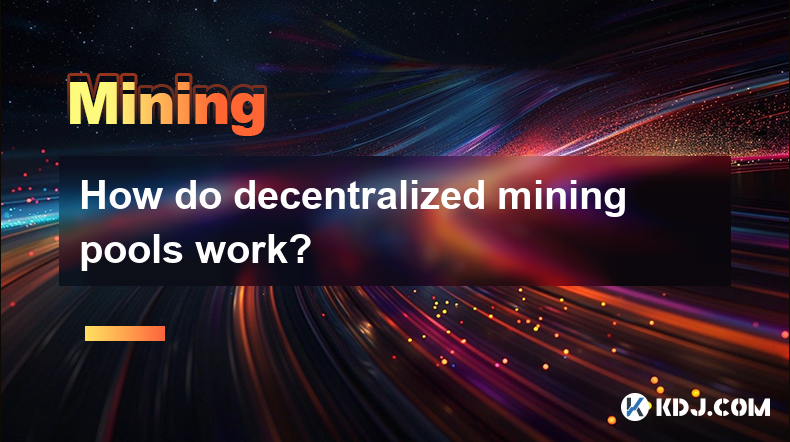
How do decentralized mining pools work?
Apr 16,2025 at 05:42am
Decentralized mining pools represent a significant evolution in the world of cryptocurrency mining, offering a more democratic and transparent approach compared to traditional centralized pools. In this article, we will explore the mechanics of decentralized mining pools, their benefits, and how they operate within the cryptocurrency ecosystem. What are...
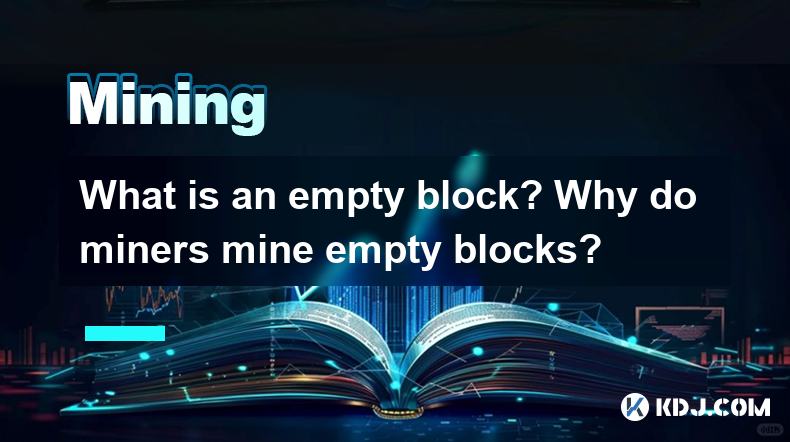
What is an empty block? Why do miners mine empty blocks?
Apr 16,2025 at 01:28am
What is an Empty Block?An empty block in the context of blockchain technology, particularly in cryptocurrencies like Bitcoin, refers to a block that contains no transactions other than the coinbase transaction. The coinbase transaction is a special transaction in which new bitcoins are generated and awarded to the miner who successfully mines the block....

How to reduce the electricity cost of mining?
Apr 16,2025 at 08:42am
Mining cryptocurrencies, particularly Bitcoin, is an energy-intensive process that can lead to significant electricity costs. However, there are several strategies that miners can employ to reduce these expenses and make their operations more cost-effective. In this article, we will explore various methods to minimize the electricity cost of mining. Cho...

What is the difference between cloud mining and physical mining?
Apr 16,2025 at 01:49am
What is the difference between cloud mining and physical mining? In the world of cryptocurrencies, mining is the process by which new coins are generated and transactions are verified and added to the blockchain. There are two primary methods of mining: cloud mining and physical mining. Understanding the differences between these two approaches can help...

What does mining difficulty adjustment mean?
Apr 16,2025 at 12:42am
What does mining difficulty adjustment mean? Mining difficulty adjustment is a crucial mechanism in blockchain networks, particularly in Proof of Work (PoW) systems like Bitcoin. It ensures that the rate at which new blocks are added to the blockchain remains consistent, despite fluctuations in the total computational power (hash rate) of the network. T...

What hardware configurations are required for GPU mining?
Apr 16,2025 at 09:21am
GPU mining has become a popular method for cryptocurrency enthusiasts to mine various cryptocurrencies, such as Ethereum, Ravencoin, and others. To successfully engage in GPU mining, it is essential to understand the hardware configurations required to maximize efficiency and profitability. This article will delve into the specifics of what you need to ...

How do decentralized mining pools work?
Apr 16,2025 at 05:42am
Decentralized mining pools represent a significant evolution in the world of cryptocurrency mining, offering a more democratic and transparent approach compared to traditional centralized pools. In this article, we will explore the mechanics of decentralized mining pools, their benefits, and how they operate within the cryptocurrency ecosystem. What are...

What is an empty block? Why do miners mine empty blocks?
Apr 16,2025 at 01:28am
What is an Empty Block?An empty block in the context of blockchain technology, particularly in cryptocurrencies like Bitcoin, refers to a block that contains no transactions other than the coinbase transaction. The coinbase transaction is a special transaction in which new bitcoins are generated and awarded to the miner who successfully mines the block....
See all articles























































































